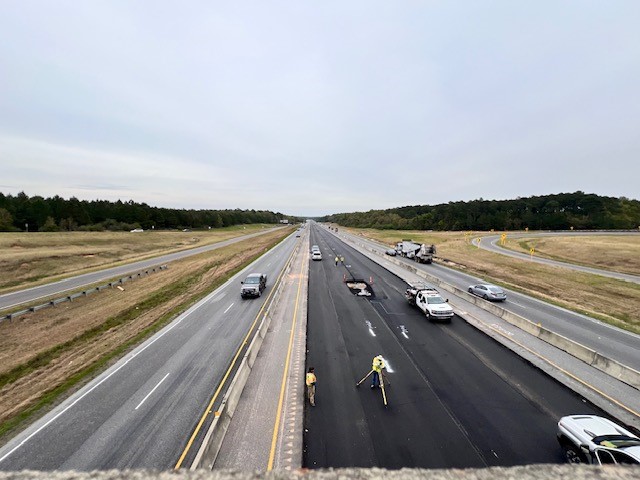Making travel safer, faster and more efficient for both passenger and commercial traffic are the goals of interstate roadway projects. In the southern part of Alabama, current widening projects include I-10 and I-65.
The latest ALDOT interstate project is the widening of approximately 5 miles of both east and westbound lanes of I-10 from March Road to McDonald Road in Mobile County. This widening project is adding a third lane in each direction for a total of six lanes, providing additional capacity to the nearly 65,000 vehicles a day that routinely travel this stretch of interstate.
Funding for this $24.8 million project is made possible entirely by the Rebuild Alabama Act.
This I-10 widening project is nearing completion with ALDOT estimating the project to finish in the summer of 2024.


Future interstate widening projects for Mobile County
ALDOT is currently in the design phase on capacity improvements from the current 4-lane configuration to a 6-lane improvement along a two-mile stretch of I-65 from Exit 13 (SR-158) to Exit 15 (Celeste Road) in Saraland. The scope of this project will be to construct a third lane in both the north and southbound directions to help ease congestion.
Under the current design, the I-65 bridges over SR-158 will be replaced and widened as part of the project. This design adds capacity to the interstate and provides a safety improvement from the existing 2-lane bridge to a new 3-lane bridge with wider shoulders for safer travel. In addition, new intelligent transportation system devices will be installed for traffic monitoring and to provide drivers with traffic conditions and information. The project is anticipated to begin construction fall 2024 with an approximate completion within 36 months.
As part of ALDOT’s commitment to addressing statewide capacity needs, this project is included in the current Statewide Transportation Improvement Program (STIP). ALDOT’s STIP is a five-year plan that the agency uses for budgeting and planning purposes. The project is currently estimated at a cost of $25 million using federal funds with the state providing the required 20 percent match.




